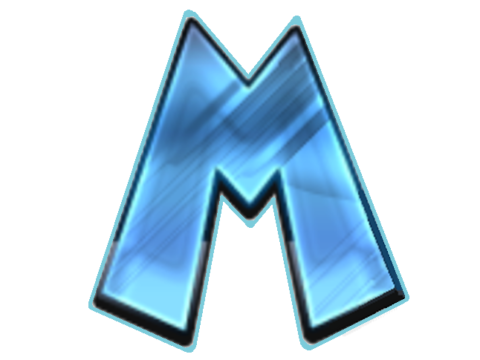
Stablecoins have become a crucial part of the cryptocurrency ecosystem, offering a stable alternative to volatile digital assets like Bitcoin and Ethereum. Among the most popular stablecoins are Tether (USDT) and USD Coin (USDC), both pegged to the U.S. dollar and widely used across cryptocurrency exchanges, decentralized finance (DeFi) platforms, and payment systems. In this comparative analysis, we’ll explore the key differences and similarities between Tether and USDC, and how each plays a unique role in the digital currency space.
1. What Are Stablecoins?
Stablecoins are digital assets designed to maintain a consistent value, typically pegged to a fiat currency like the U.S. dollar. Unlike volatile cryptocurrencies, stablecoins offer price stability, making them ideal for trading, payments, and preserving value.
- Tether (USDT) and USD Coin (USDC) are both fiat-collateralized stablecoins, meaning their value is backed by reserves of U.S. dollars or equivalent assets.
Despite their shared purpose, there are notable differences in how Tether and USDC operate, their transparency, and their adoption in the market.
2. Overview of Tether (USDT)
Tether (USDT) was the first stablecoin introduced to the market, launching in 2014 by Tether Limited. It is currently the largest stablecoin by market capitalization and trading volume, frequently used for cryptocurrency trading and as a safe haven during market volatility.
- Market Capitalization (as of 2024): Over $82 billion
- Blockchain Compatibility: USDT operates on several blockchains, including Ethereum, Tron, Solana, and Bitcoin’s Omni Layer, making it highly accessible across platforms.
Tether’s primary advantage is its liquidity. With such a high trading volume, USDT is widely available on exchanges, making it easy to move large sums without slippage.
Controversies Around Tether
Despite its dominance, Tether has faced scrutiny over the years regarding the transparency of its reserves. Initially, the company claimed that every USDT was fully backed by U.S. dollars held in reserves. However, subsequent disclosures revealed that Tether’s reserves also include cash equivalents and other assets like commercial paper.
This lack of clarity has led to legal disputes and regulatory actions, but USDT remains a key player due to its widespread use.
3. Overview of USD Coin (USDC)
USD Coin (USDC), introduced by Circle in 2018, is a relatively newer stablecoin but has quickly gained traction due to its focus on regulatory compliance and transparency. USDC is fully backed by U.S. dollars and short-term U.S. Treasury bonds, with monthly audits by independent accounting firms.
- Market Capitalization (as of 2024): Over $31 billion
- Blockchain Compatibility: USDC operates on several blockchain networks, including Ethereum, Solana, Avalanche, and Polygon, making it versatile for DeFi applications and exchanges.
USDC has become especially popular in the DeFi space, where transparency and trust are crucial for long-term sustainability.
Regulatory Compliance
One of USDC’s primary selling points is its adherence to regulatory standards. Circle, the issuer of USDC, regularly publishes attestation reports to ensure that every USDC is fully backed by equivalent reserves. This commitment to transparency has helped build trust among institutional investors and regulatory bodies, positioning USDC as a preferred stablecoin in regulated environments.
4. Tether (USDT) vs. USD Coin (USDC): Key Differences
1. Transparency and Trust
- Tether (USDT): Tether has faced ongoing criticism for its lack of transparency regarding its reserve holdings. While the company has improved its reporting, questions remain about the exact composition of its reserves.
- USD Coin (USDC): USDC has built its reputation on transparency, offering monthly audits conducted by Grant Thornton, a top accounting firm. This transparency has made USDC more attractive to institutions and businesses that prioritize compliance and risk management.
2. Market Adoption and Use Cases
- Tether (USDT): USDT is the most widely traded stablecoin and is used extensively on cryptocurrency exchanges for trading pairs. Its high liquidity makes it ideal for traders looking to quickly move in and out of positions.
- USD Coin (USDC): While USDC is growing in adoption, it is particularly favored in the DeFi space, where trust and transparency are critical. Many decentralized applications (DApps) and protocols prefer USDC because of its regulatory adherence.
3. Reserves and Backing
- Tether (USDT): Tether’s reserves include not only cash but also commercial paper, bonds, and other financial assets. This has led to concerns about whether USDT is fully backed by liquid assets.
- USD Coin (USDC): USDC is fully backed by cash and U.S. Treasuries, with regular attestations to prove its solvency. This clear backing has made USDC the stablecoin of choice for institutions seeking a more transparent option.
4. Blockchain Support and Speed
- Tether (USDT): USDT is available on multiple blockchains, including Ethereum, Tron, Solana, and Bitcoin (via the Omni Layer). This broad support makes it highly accessible, although transaction speeds and fees can vary depending on the network.
- USD Coin (USDC): USDC is also available on several blockchains, including Ethereum, Solana, Avalanche, and Polygon. It is widely used in DeFi protocols, where Ethereum’s network congestion and high fees are often mitigated by layer-2 scaling solutions or alternative blockchains like Solana.
5. Regulatory Status
- Tether (USDT): Tether has been the subject of regulatory investigations, particularly around its reserve transparency. While it remains operational and dominant, its regulatory challenges create uncertainty about its long-term prospects.
- USD Coin (USDC): USDC is fully compliant with U.S. regulations, and Circle works closely with regulators to ensure that its stablecoin adheres to legal standards. This makes USDC a more secure option for institutions operating in regulated environments.
5. Which Stablecoin Is Better: Tether or USDC?
The choice between Tether (USDT) and USD Coin (USDC) ultimately depends on your specific needs and risk tolerance.
- Use USDT if: You’re looking for high liquidity and availability across numerous exchanges. USDT’s widespread adoption makes it ideal for traders and investors who need fast access to stablecoin pairs.
- Use USDC if: Transparency and regulatory compliance are important to you. USDC’s focus on clear backing and regular audits makes it a safer choice for institutional investors, DeFi applications, and anyone concerned about regulatory risks.
6. Conclusion: Tether vs. USDC
Both Tether and USDC play essential roles in the cryptocurrency ecosystem, offering stability in a world of price volatility. While Tether remains the dominant stablecoin in terms of market capitalization and trading volume, USDC is gaining ground due to its transparency and regulatory compliance.
For traders seeking liquidity, Tether is often the go-to stablecoin. However, for those prioritizing trust, transparency, and institutional backing, USD Coin is becoming an increasingly popular alternative. Both stablecoins will continue to shape the future of cryptocurrency, providing users with reliable and stable options in an ever-evolving market.











